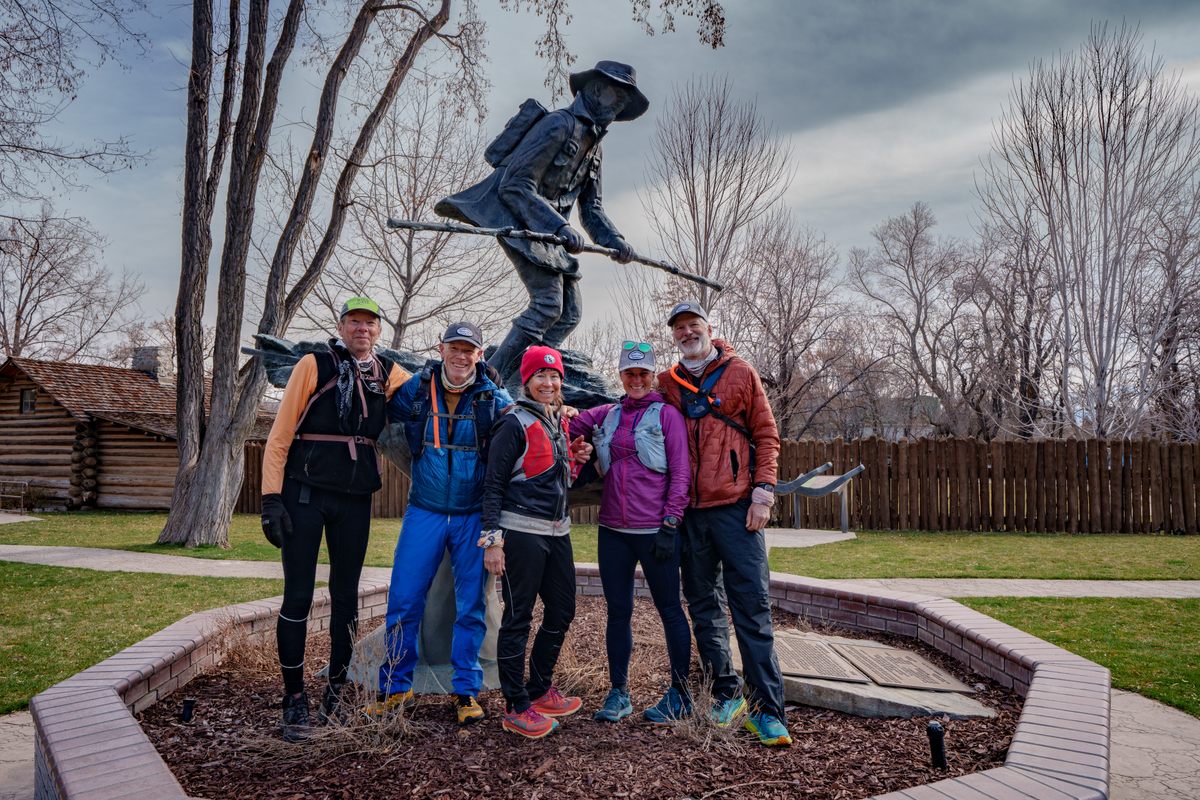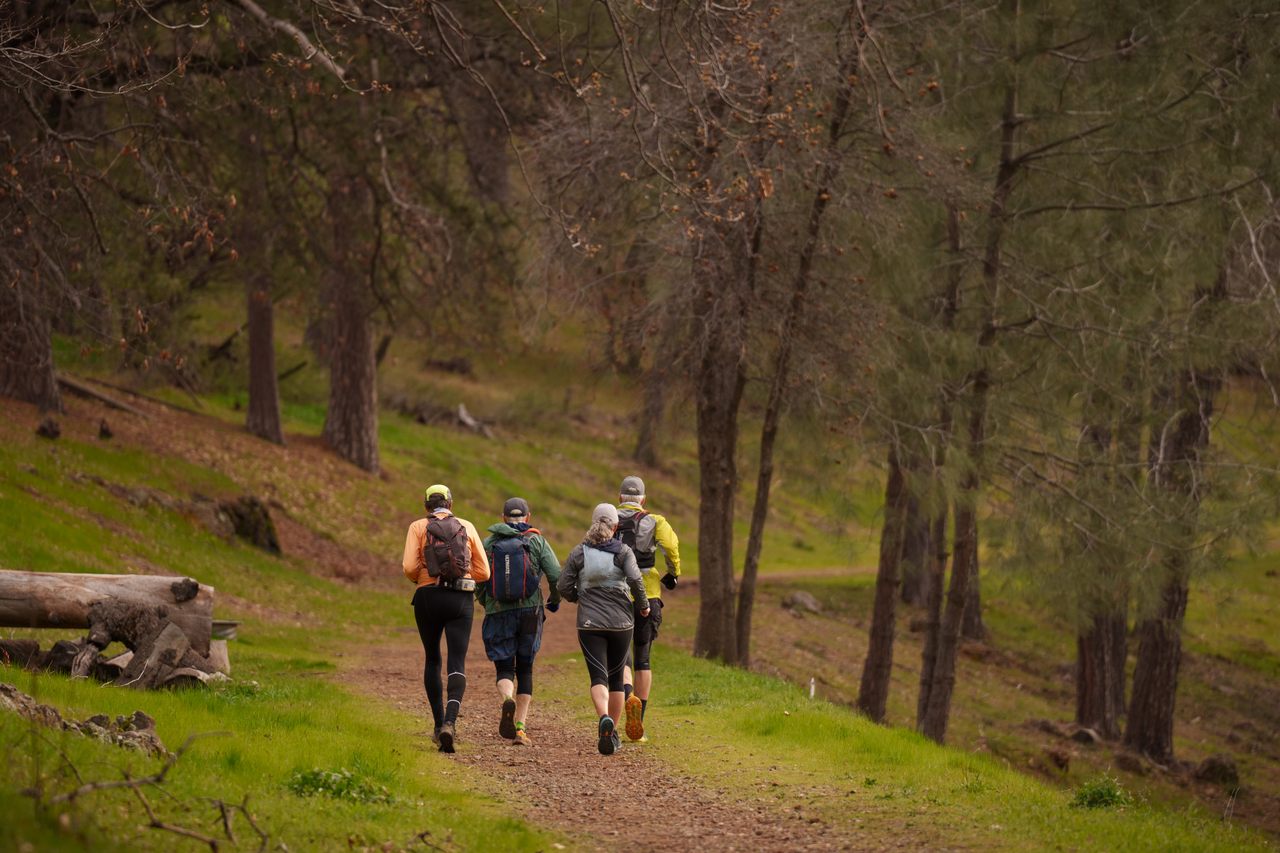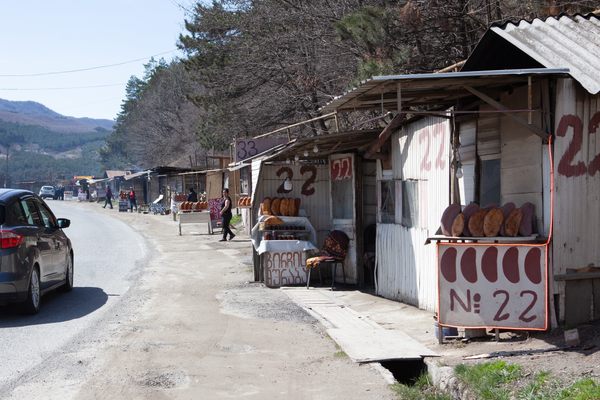Follow the Footsteps of an Incredible Mailman From the Gold Rush Era
Hikers recreate Snowshoe Thompson’s 100-mile route through the mountains by walking, running, and even skiing.
It was early, south of 7 a.m., when four ultrarunners gathered inside a historic post office in Placerville, California in March 2024. A small crowd of onlookers clutched cups of coffee as the group known as History Expeditions spoke about a man called Snowshoe Thompson. They listened intently, because Thompson’s journey determined much about the next week; this team was about to embark on a 100-mile trek to recreate his epic route through the Sierra range during the Gold Rush era.
Snowshoe Thompson was a mailman who delivered mail on skis (which he called snowshoes) through some of the most punishing and snowbound mountain passes in the nation—the same region that trapped the Donner Party in the winter of 1846-47. Starting from a nearby but no longer extant post office, Thompson accomplished this journey between Placerville and Genoa, Nevada again and again, carrying up to 100 pounds of mail on his back—not just envelopes but packages, too.

He brought no blanket: He would arrange pine boughs on the snow to nap on. Just a few bits of jerky or biscuit would tide him over; anything more would weigh him down. It took him three days to travel eastbound and two days to return, an incredible round-trip through the wilderness of trees and granite rockfaces. Thompson traveled day and night, and “navigated by the stars and the sound of the river and the moonlight,” says Bob Crowley, the History Expedition’s co-founder. Thompson did the mail run two to four times a month each winter from 1856 to 1876.
This hardy mailman hailed from Telemark, Norway (telemark skiing involves downhill skiing on bindings that only hold your toe, like a cross-country ski—and that’s how Thompson made his way down these slopes). There, many statues and organizations bear his name, and the same is true in various U.S. cities where he lived upon emigrating. His story is filled with daring feats and rescues of trapped people… all made more poignant by the fact that he wasn’t fully paid for his labors and went to Washington, D.C. to plead for reimbursement. He was denied.

At the send-off of the 2024 trek, Crowley showed the crowd a replica of a letter, the original of which was once carried by Thompson. The letter shows burn marks in its center from being in a metal box during not one but two different fires. In handwritten cursive, a man named Hosea Grosh wrote to his father to catch up on daily life, as part of a series of letters sent by him and his brother Ethan before they both perished in the pursuit of gold (a trek that History Expeditions recreated in 2023 through the Nevada and California wilderness). Crowley conveyed how crucial these communications were to people at the time, and how important Thompson’s role was.
“Snowshoe Thompson not only was part of history, he helped preserve it, because of the emigrant letters he brought out,” says Crowley. Eager to begin the journey, he headed out with the other members, Jennifer Walker Hemmen, Tim Twietmeyer, and Hal Hall. After a few blocks, they left the sidewalks of Placerville and stepped onto the El Dorado Trail, which immediately offered a winding dirt path, a bubbling brook below, and oak trees providing a vast canopy.

Over the next five days, they walked, ran, snowshoed, skied, and even had to get into a car at one point due to unsafe snowbanks on the highway shoulders they’d intended to use. A multi-day blizzard had dumped up to 11 feet of snow in places and forced the group to push back its start date. They trudged through what History Expeditions member Elke Reimer (who joined on the third day after recovering from illness) calls “Sierra concrete,” the heavy snow that the Sierra is famous for. The journey ended at the Genoa cemetery, where they paid homage to Thompson at his gravestone marked with crossed skis.
But you don’t have to be an ultra-athlete to experience part of the trail yourself, especially in warmer weather when hiking replaces snowshoeing and skiing. Thompson basically followed the wagon train trails under the snow, according to retired educator Frank Tortorich, Jr., author of Gold Rush Trail: A Guide to the Carson River Route of the Emigrant Trail and Hiking the Gold Rush Trail. He also wrote the only definitive biography of Thompson, John A. “Snowshoe” Thompson, Pioneer Mail Carrier of the Sierra. He suggests hikers should check out some of Thompson’s segments in California, such as a 16-mile stretch from Caples Lake to Tragedy Spring, or a longer, 35-mile leg from Woodfords to Leek Springs. Both hikes, and many others, can be found in his books.

The History Expeditions team also plans to launch an app later this spring that will help people do their own tour. Crowley describes how, as you approach a waypoint by car or on foot, the app will direct you to park or pause, and then narrates the landmark’s significance.
Of course, none of us can truly know what it was like for Thompson flying down the slopes nearly 150 years ago—much of his path is now covered by highways 50, 89, and 88, encompassing wagon train routes, the El Dorado Trail, and the Pony Express Trail. “It’s a paved road, so I can’t experience it the way he would’ve seen it,” says Hemmen. But she points out that at some parts of the route, “we see the same rocks and landmarks he did.”
The Snowshoe Thompson Expedition was the fourth historical expedition for the group (they previously did two Donner-Party-related treks and the Grosh Brothers one). Crowley says they’ll do another each year, “as long as we can find good stories and have the horsepower in our lives. We look forward to it all year.”















Follow us on Twitter to get the latest on the world's hidden wonders.
Like us on Facebook to get the latest on the world's hidden wonders.
Follow us on Twitter Like us on Facebook